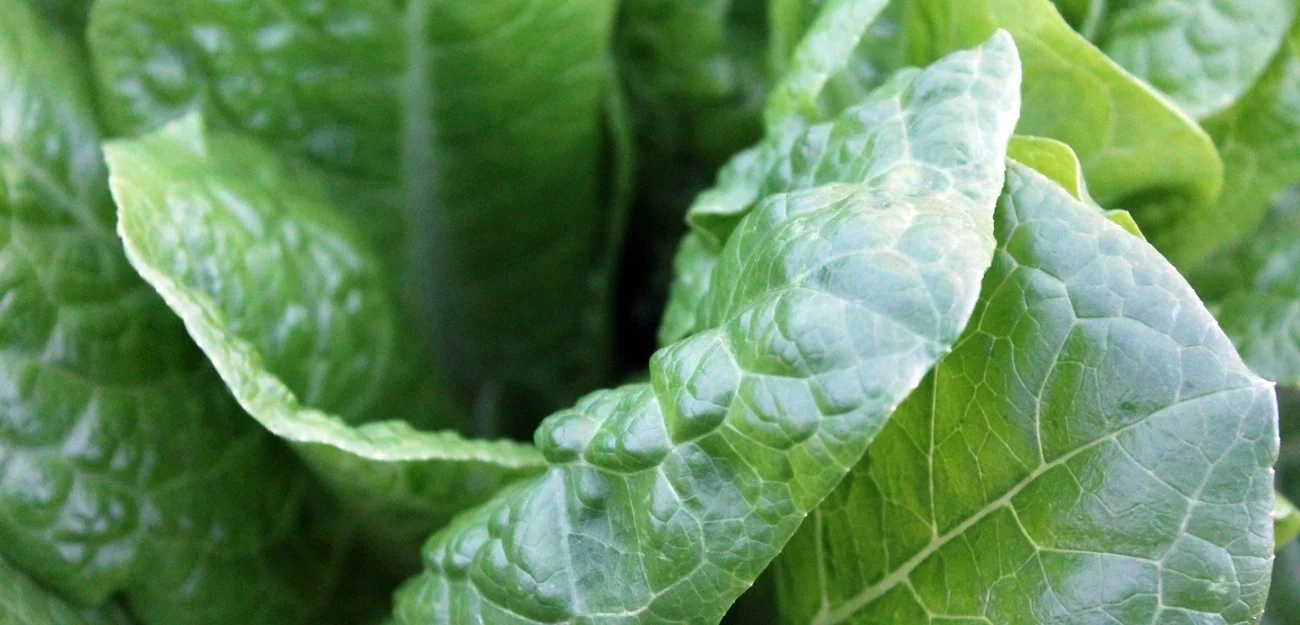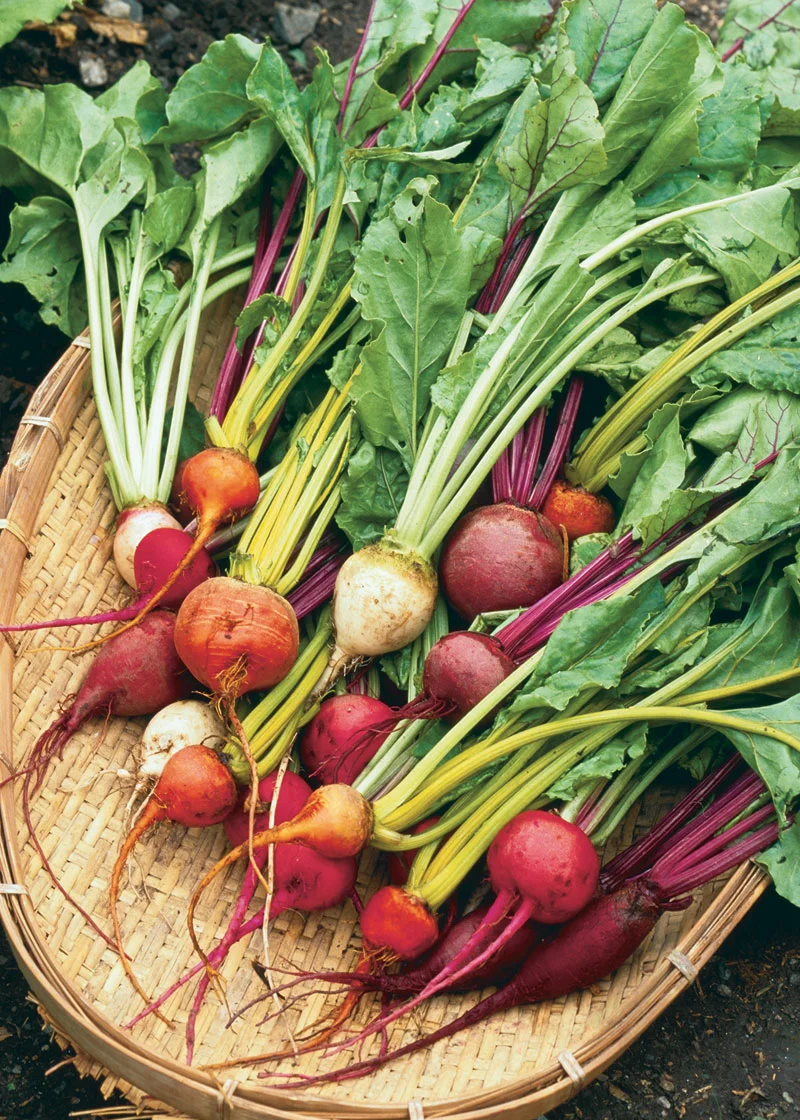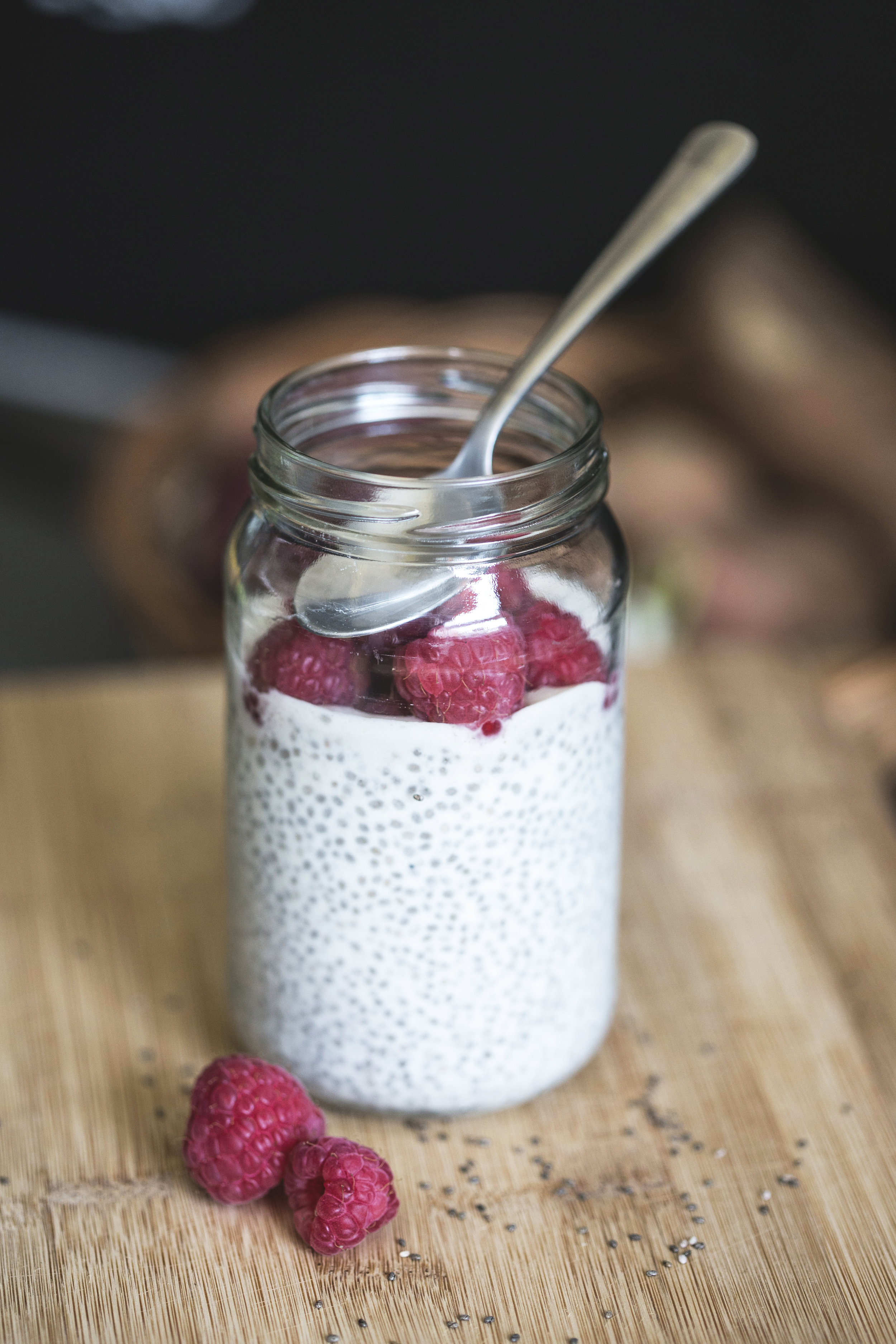Feeling a bit stressed out and maybe under some pressure at work, school, or home and you instantly search for a snack to help lift your mood and then suddenly feel guilty- does this sound familiar? Food is often where we turn our attention to when feeling stressed
Viewing entries tagged
nutrition
Swiss chard is a green leafy vegetable that is popular this time of year. It is very diverse and its leaves can be used for salads, soups, in a stir fry, and more! Swiss chard is high in antioxidants, vitamins A, C and K, magnesium and potassium. Below are some recipes you can try out with Swiss chard!
Being a "locavore" means one is part of a movement which aims to connect food producers and food consumers in the same geographic region, in order to develop more self-reliant and resilient food networks.
Written by Cheyenne Watts | Reviewed by Adiana Castro MS, RDN, CDN, CLT
Recently you may have gone out for a nice, sit-down meal at a trendy New York City restaurant. The menu is made of recycled cardboard, the ink used to print the meal options is eco-friendly, and the furniture upon which you sit and dine is made of reclaimed materials collected from ship wreckage. You begin to consider the options, but are overwhelmed by the options- Do you want free-range chicken from Upstate New York? Or would you prefer grass-fed beef that roamed on a 50-acre pasture? Or, perhaps, you’d like to order the goat that was raised by a traditional two-parent family with a steady income, and went to a private school for gifted goats? That last option is a silly exaggeration, but it brings us to the point that the Farm-to-Table trend has gotten a bit out of hand. The line between serving food that is truly local and telling utter lie to keep up the establishments’ appearances has become blurred, but this does not mean fresh foods are impossible to find.
Farm-to-table is a social movement which promotes serving local food at restaurants and school cafeterias, preferably through direct acquisition from the producer. Farm-to-table often incorporates a form of food traceability, or knowing where your food comes from, where the farm or garden the food originates is made known.
The farm-to-table movement has arisen more or less concurrently with changes in attitudes about food safety, food freshness, food seasonality, and small-farm economics. Alice Waters, restauranteur of Chez Panisse and mother of the Slow Food movement, began listing the farms on her restaurant menus to “remind people that food really did grow on farms,” (Vanity Fair, 2015).
Restaurants, schools, and hotels alike want to source locally and follow a farm-to-table method because locally sourced food is more frequently organic (meaning it doesn’t use GMOs), tastes better (because it hasn’t been picked early and shipped in a truck), it comes from small family farms, and there are more unique types varieties of fruits and vegetables.
Recently, farm-to-table eating has become more available to the general public through farmers markets and monthly food box subscriptions. Families can visit the farmers market on the weekend to pick out organic produce, fresh baked goods, homemade jams, and grass fed meat to cook for a wholesome dinner. Also, some subscription food boxes source locally when possible and only buy their product from organic, small farms.
New York City is home to many farm-to-table restaurants. You can find a comprehensive list of some of the most famous ones here. In addition, you can find all of your local farmers markets on this site.
If you want to support local farmers, eat healthier and more delicious food, and reduce your carbon footprint, please try out a new farm-to-table restaurant, or cook a meal with your family using produce you purchased at a local NYC Farmers Market. Happy Eating!
Written by Cheyenne Watts | Reviewed by Jennifer Calo MS, RDN, CDN, CDE, CLT
LET’S RAISE AWARENESS!
In February of 1964, President Lyndon B. Johnson declared the first National Heart Month to raise awareness of cardiovascular health, the leading cause of death for both men and women in the United States. Often people will wear red to honor the holiday, to remember those who have lost their lives to heart disease, and resolve to improve its prevention, detection, and treatment. Scientific research proves that diet plays a big role in the prevention and intervention of cardiovascular disease and stroke. One such heart-healthy food is the focus of our recipe article of the month: beets!
WHY EAT BEETS?
Beets contain naturally occurring nitrates, which are converted into nitric oxide in your body. Nitric oxide, in turn, helps to relax and dilate your blood vessels, improving blood flow and lowering blood pressure.
Beets also contain a nutrient called betaine which helps protects cells, proteins, and enzymes from environmental stress. It's also known to help fight inflammation and may prevent cardiovascular disease. According to Dr. Axe, there have been promising studies that suggest betaine boosts muscle mass and strength, aides in improved endurance, and helps to lower fat in the body.
While beets may stain your teeth and skin the color of Barney the Dinosaur, the very phytonutrients that give red beets their deep color contain some anti-cancerous properties. The flavonoid betazyane in beets has proven to inhibit tumor growth, and high iron content increases cellular respiration which allows the body to kill cancer cells.
Along with it’s superpower properties, beets contain many micronutrients necessary in our diet such as fiber, calcium, iron, vitamins A and C, folic acid, manganese, and potassium.
HOW CAN I ENJOY BEETS?
Here’s the thing: we know that some people have not eaten and will not eat a beet. You may think that beets are “yucky”, “weird”, or have an “odd texture”. That’s alright! We are here to provide you with three recipes to assist you in introducing this nutrient-dense and healthful root vegetable into your diet. You won’t even know you’re eating beets! Except your food might be pink… but that’s more festive anyway!
ROASTED BEET HUMMUS by Minimalist Baker
Prep time 10 mins
Total time 10 mins
Super creamy roasted beet hummus featuring a whole roasted beet, lemon, plenty of garlic flavor. Perfect with chips, pita, veggies or as a sandwich spread. (Vegan)
Serves: 6
Ingredients
1 small roasted beet
1 15 oz. can (1 3/4 cup) cooked chickpeas, mostly drained
zest of one large lemon
juice of half a large lemon
pinch salt and black pepper
2 large cloves garlic, minced
2 heaping Tbsp tahini
1/4 cup extra virgin olive oil
Instructions
Preheat oven to 375°F, remove the stem and most of the root from your beets, and scrub and wash them underwater until clean.
Wrap beets in foil, drizzle on a bit of canola oil, wrap tightly, and roast for one hour or until a knife inserted falls out without resistance. They should be tender. Set in the fridge (in a bowl to catch juice) to cool to room temperature.
Once your beet is cooled and peeled, quarter it and place it in your food processor. Blend until only small bits remain.
Add remaining ingredients except for olive oil and blend until smooth.
Drizzle in olive oil as the hummus is mixing.
Taste and adjust seasonings as needed, adding more salt, lemon juice or olive oil if needed. If it’s too thick, add a bit of water.
Will keep in the fridge for up to a week.
Nutrition Information
Serving size: 1/6 batch
Calories: 165 Fat: 12g Carbohydrates: 12g Sugar: 1.2g Fiber: 2.6g Protein: 3.4g
BERRY, BEET, MINT, LIME, AND CHIA SEED SMOOTHIE by Claire Saffitz for Bon Appetit
Choose whichever alternative milk you’d like- nut milks add body and protein, but if you prefer something lighter, go with coconut water.
Serves: 2
Ingredients
¾ cup almond milk
¾ cup frozen blackberries and/or blueberries
¼ cup grated beet (from about 1 small)
¼ cup mint leaves
2 tablespoons fresh lime juice
1 tablespoon ground chia seeds
1 tablespoon honey
Pinch of kosher salt
Instructions
Using smoothie or ice crush setting, purée almond milk, blackberries, beet, mint, lime juice, chia seeds, honey, salt, and ½ cup ice in a blender until smooth.
Pour and serve.
Nutrition Information
Serving size: ½ recipe
Calories: 173 Carbohydrates: 35g Protein: 3.5g Fat: 6g Sugars: 25g Fiber: 8g
BARLEY AND KALE SALAD WITH GOLDEN BEETS AND FETA by Jeanne Kelly for Bon Appetit
Ingredients
Serves: 4
1/4 cup plus 2 Tbsp. extra-virgin olive oil; more for drizzling
2 tablespoons white wine vinegar
2 tablespoons (packed) light brown sugar
1/2 teaspoon finely grated orange zest
Kosher salt, freshly ground pepper
1 bunch Tuscan kale***, center ribs and stems removed, leaves cut into 1-inch squares
1/4 cup minced shallots
3 medium golden beets (about 1 bunch), trimmed
1 1/4 cups pearl barley
4 ounces feta, crumbled
2 teaspoons (or more) unseasoned rice vinegar
***Tuscan kale, also called black kale, dinosaur kale, Lacinato kale, or cavolo nero, has long, narrow, very dark green bumpy leaves and is available at farmers' markets and some supermarkets.
Instructions
Whisk 1/4 cup oil, white wine vinegar, sugar, and orange zest in a large bowl to blend; season with salt and pepper. Add kale and shallots; mix until completely coated. Cover and chill until kale is tender, at least 3 hours.
Meanwhile, preheat oven to 375°. Arrange beets in a small baking dish and drizzle with a little oil. Season with salt and turn beets to coat. Cover with foil. Bake beets until tender when pierced with a thin knife, about 45 minutes. Let cool completely. Peel beets. Cut into 1/4-inch pieces (you should have about 2 cups).
Cook barley in a large pot of boiling salted water until just tender, about 45 minutes. Drain barley and spread out on a rimmed baking sheet; let cool completely.
Add beets, barley, and feta to kale. Drizzle salad with remaining 2 tablespoons oil and 2 tablespoons rice vinegar; fold gently to combine. Season to taste with pepper and more rice vinegar, if desired.
DO AHEAD Salad can be made 2 days ahead. Cover and chill.
Nutrition Information
Nutritional Content
Serving size: ¼ recipe
Calories: 550 Fat: 27g Carbohydrates: 66g Dietary Fiber: 14g Sugars: 7g Protein: 15g
Coconut oil has been all the craze for the past few years. Not too long ago, it would have been quite a task to track down a bottle of this trendy oil, but now coconut oil is found in most supermarkets and health food stores. Coconut oil is well-known as a moisturizing treatment for hair and skin, and has been rumored to lower risk of cardiovascular disease, and help with weight loss.
Keep gratitude in mind this holiday season. Remember all you are thankful for. Savor each
bite of food and enjoy each moment spent with your loved ones. And always remember to
think of your accomplishments as well as who helped you achieve them. Happy Holidays!
One of the greatest struggles to eating healthy is the lack of convenience. You work hard all day, hit the gym, and then head home for some much needed relaxation. As you start to sink deep into your couch with Netflix open on your lap, you realize, “I didn’t make lunch for tomorrow, [insert angry words here].”
Apricots are currently in season and a delicious fruit indicating the start of summer. It’s dried and frozen forms are available all year long, but fresh apricots are available in North American only in the months of May-August.
We all have childhood memories of biting into fresh, crisp slice of watermelon on a hot summer day, juices dripping down our chins and ruining the t-shirt Mom made us promise not to spill on. How come the watermelon seemed to be packed with infinitely more flavor in the summer than any other time of the year?
You may have heard your friends talk about it, or seen it sold at your favorite lunch place, but what is Kombucha? Simply, Kombucha is a slightly bubbly, sweetened black or green tea that is produced by fermenting the tea with what is called a SCOBY (a “symbiotic colony of bacteria and yeast”). Sometimes the tea also has added flavors like fruit juice.
Every March, the Academy of Nutrition and Dietetics sponsors “National Nutrition Month,” a nutrition education and information campaign that emphasizes the significance of making smart food choices and developing healthy eating and exercise habits.
Looking for the perfect side dish, something nutritious, in season and full of flavor? Well, your February “go-to” vegetable is Brussels sprouts. Brussels sprouts are a cruciferous vegetable, so they are loaded with omega-3s, fiber as well as vitamins K, A, and C.
As we age our body composition changes, we lose muscle mass and our body fat percentage increases – even though we may weigh the same we don't look or feel the same due to changes in our body composition.
Cozy up with recipes that are perfect for the season!
Are fad diets sustainable?
What is trending?


















